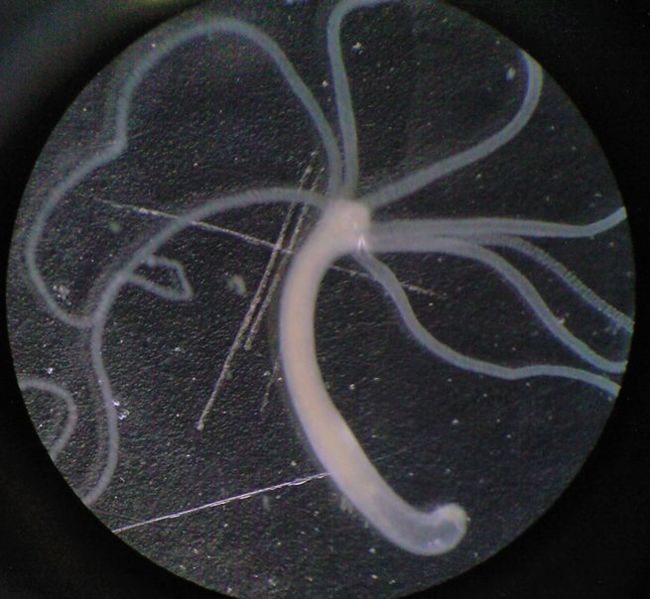As you can read in any paper, there are big problems today with hospital-acquired infections - people picking up nasty bugs in hospital - along with antibiotic resistance, meaning we have fewer weapons in our fight against bacteria. So the search is on for new antibiotics.
 Now scientists at the university of Kiel in Germany have found an unexpected source of new bug-busters - tiny animals known as Hydra. These tiny creatures, just a few millimetres long, live in freshwater ponds and streams. Writing in the Journal of Biological Chemistry, Joachim Grötzinger and his colleagues have discovered a new protein in Hydra, which they've called hydramacin-1. And it has powerful anti-bacterial action.
Now scientists at the university of Kiel in Germany have found an unexpected source of new bug-busters - tiny animals known as Hydra. These tiny creatures, just a few millimetres long, live in freshwater ponds and streams. Writing in the Journal of Biological Chemistry, Joachim Grötzinger and his colleagues have discovered a new protein in Hydra, which they've called hydramacin-1. And it has powerful anti-bacterial action.
What makes hydramacin-1 unusual is that it isn't at all similar to most of the other anti-microbial proteins that scientists have previously discovered, and seems to be part of a new protein family. Looking at the 3-D structure of hydramacin-1, the team found that it is most closely related to a superfamily of proteins including some found in scorpion venom, and also two leech proteins. This is potentially powerful, as it means that it's a new angle to try in the war on bacteria.
Lab tests showed that hydramacin-1 could kill a wide range of different bacteria, including bugs called Klebsiella oxytoca, which are a common culprit in many hospital-acquired infections. The researchers found that hydramacin-1 works by sticking to the surface of bacteria, causing them to lump together, then breaking the bacterial cell membranes so they are killed.
Although this is a long way from being a commercial microbicide or treatment, it's yet another small step forward on the human front in our war on bugs.
- Previous Talking about post-natal depression
- Next Fingers and Traders










Comments
Add a comment